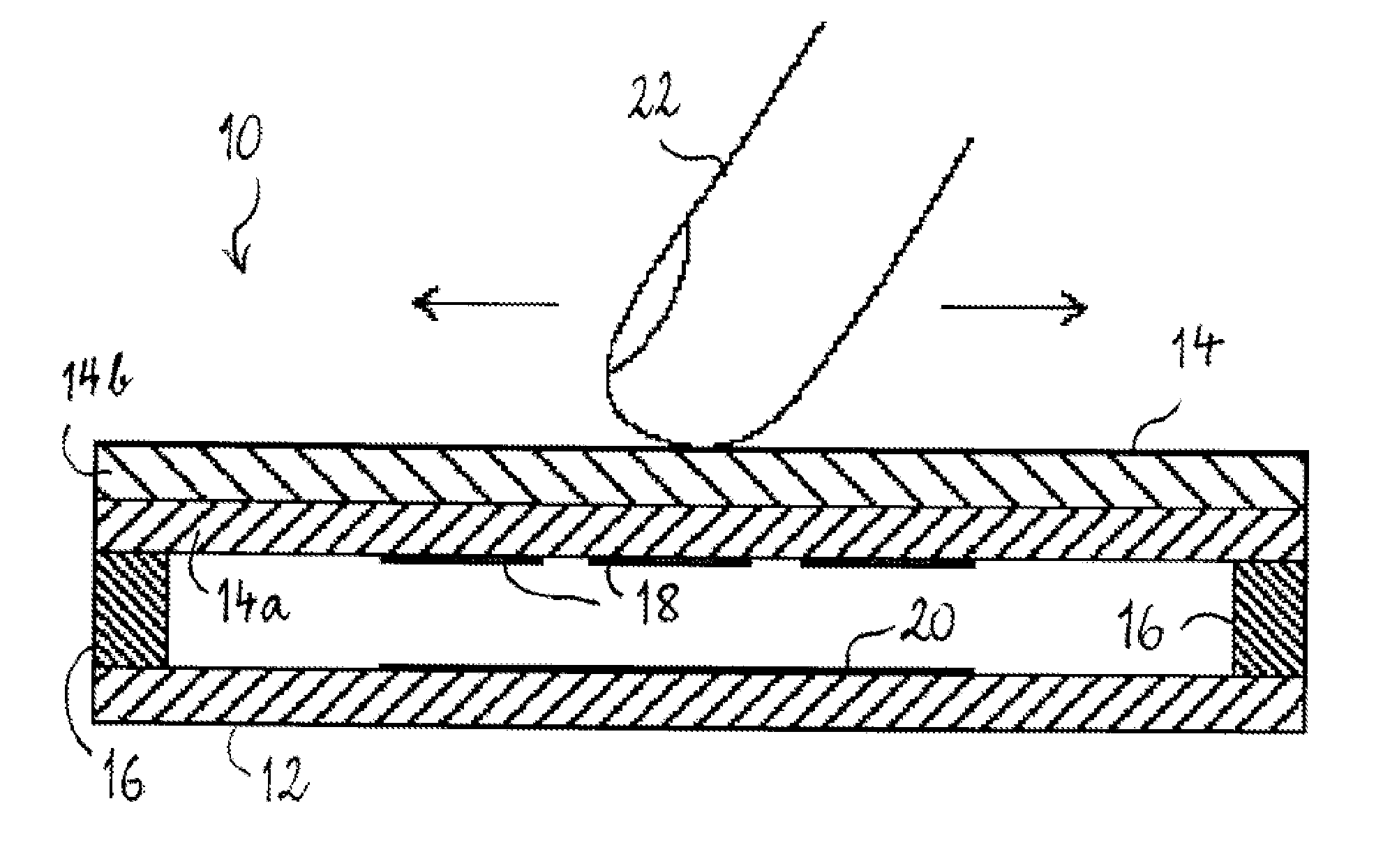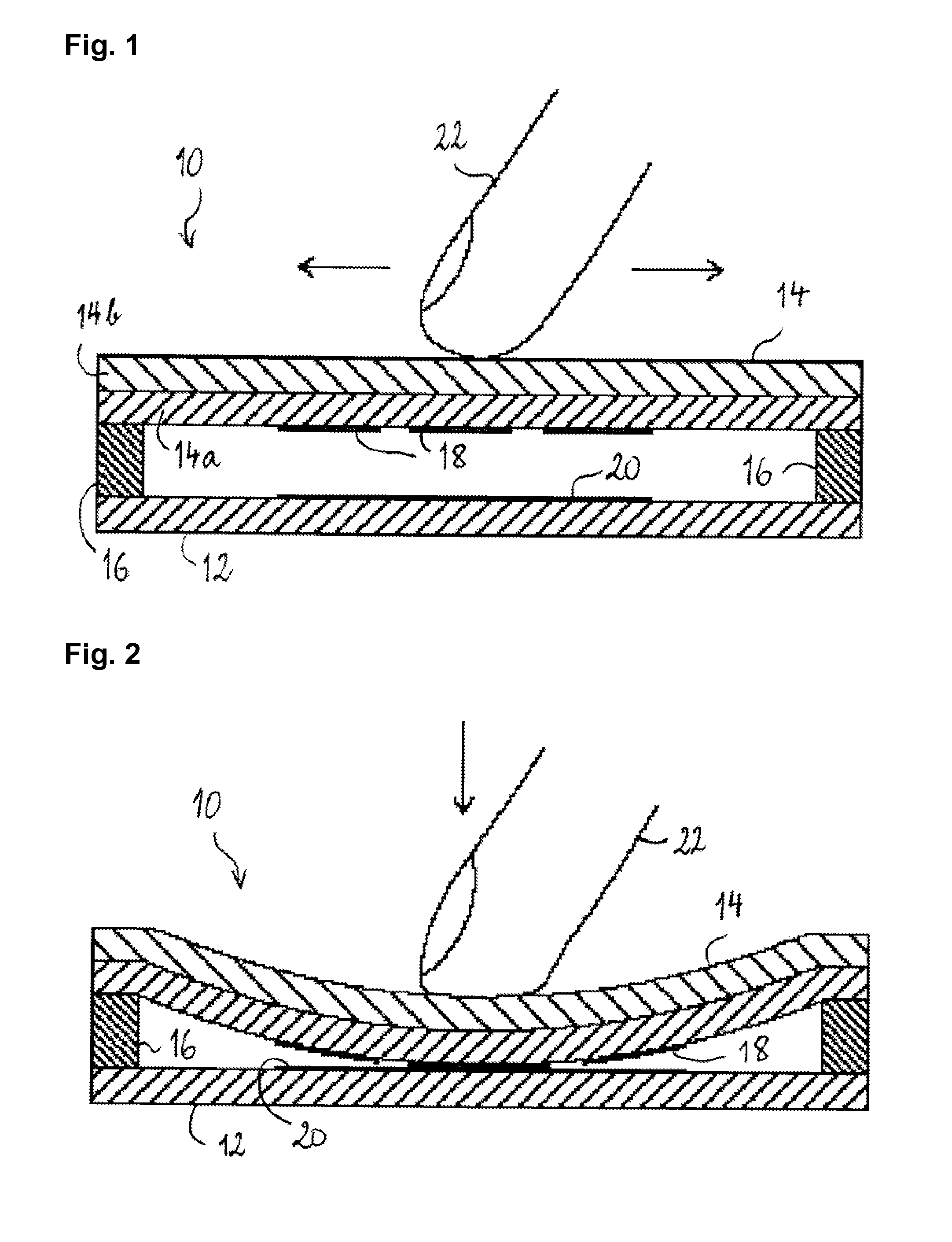Touchpad with strip-shaped input area
- Summary
- Abstract
- Description
- Claims
- Application Information
AI Technical Summary
Benefits of technology
Problems solved by technology
Method used
Image
Examples
Embodiment Construction
[0041]Touchpad 10 of FIGS. 1 to 4 is configured for detecting the position of a user's finger or stylus in a single dimension. The touchpad 10 has an elongated input area with a main line of extension, which defines the dimension along which the user may move his or her finger or stylus and in which the position is detected. The touchpad 10 comprises a support element 12, a cover plate 14 and a spacer 16 delimiting the input zone, in which the cover plate 14 spans over the support element 12. The support element 12 is shown here as a mechanically rigid insulating plate but those skilled will appreciate that the support element more preferably comprises a mechanically rigid base plate having an insulating substrate, such as a film or a sheet, applied on the side facing the cover plate 14. The cover plate 14 comprises an insulating substrate 14a and a protective layer 14b applied to the surface of the substrate 14a that faces toward the operator. The protective layer 14b is made of a ...
PUM
 Login to View More
Login to View More Abstract
Description
Claims
Application Information
 Login to View More
Login to View More - R&D
- Intellectual Property
- Life Sciences
- Materials
- Tech Scout
- Unparalleled Data Quality
- Higher Quality Content
- 60% Fewer Hallucinations
Browse by: Latest US Patents, China's latest patents, Technical Efficacy Thesaurus, Application Domain, Technology Topic, Popular Technical Reports.
© 2025 PatSnap. All rights reserved.Legal|Privacy policy|Modern Slavery Act Transparency Statement|Sitemap|About US| Contact US: help@patsnap.com



